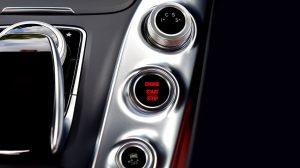Car Starter Motor: When Should It Be Replaced?
The starter motor of the car is one of the fundamental elements for the engine, find out when it is faulty and how to solve the situation.
Each motor vehicle is equipped with a starter motor, a central element that allows the vehicle to start. In fact, no vehicle, neither petrol nor diesel, can start alone. The fuel found in the engine receives oxygen thanks to the intake and compression that occur before starting; the process is generated by the motor itself, which is, therefore, a fundamental element which, in the event of a fault, must be solved immediately, because it can give rise to a serious problem.
How does the starter motor work?
 It is the component that allows the ignition of the engine; its task is to help any internal combustion engine to overcome the inertia of the mass, the friction, and the compressive strength. It is a small electric motor, and the battery activates it directly. Fundamental is the role of the electromagnet which, thanks to the action of the solenoid, which connects the starter motor to the battery, closes the metal contacts with the starter motor, as well as activating the fork lever, which engages the pinion in the flywheel gear. The starter motor allows the transformation of the electrical energy coming from the battery into mechanical energy. When the starting is completed, then the engine starts running independently, at which time the car’s starter motor turns off.
It is the component that allows the ignition of the engine; its task is to help any internal combustion engine to overcome the inertia of the mass, the friction, and the compressive strength. It is a small electric motor, and the battery activates it directly. Fundamental is the role of the electromagnet which, thanks to the action of the solenoid, which connects the starter motor to the battery, closes the metal contacts with the starter motor, as well as activating the fork lever, which engages the pinion in the flywheel gear. The starter motor allows the transformation of the electrical energy coming from the battery into mechanical energy. When the starting is completed, then the engine starts running independently, at which time the car’s starter motor turns off.
As we can understand, it is one of the most reliable components of any vehicle, and moreover, it does not require specific and in-depth maintenance; although faults may occur, let’s see which ones and how to solve them.
Starter motor failures: causes and symptoms
By inserting the key to start the car, it may happen that the car does not respond to the command and does not start, or that unusual noises can be heard. The malfunction of the starter motor is usually due to problems that can be easily solved. If the damage is more serious than expected, then you must immediately take the car to a mechanic.
 Here are the main causes and consequent symptoms of starter motor failure that may occur:
Here are the main causes and consequent symptoms of starter motor failure that may occur:
- the battery is exhausted, the panel lights up when you insert the key, but when you turn it, you can hear a sort of “sound drop”;
- the electromagnet does not work, a continuous tapping is heard, and the failure of the motor causes the voltage drop, which does not allow the motor to start;
- when the problem is with the entire power supply circuit and not just the magnet, instead of the tapping, a knocking noise is heard;
- no symptoms when inserting the key, the internal electrical circuit is totally interrupted.
In the first two cases, it is necessary to replace the battery and electromagnet; in the others, it is necessary to change the starter motor.
The starter motor of the car is one of the fundamental elements for the engine, find out when it is faulty and how to solve the situation.
Each motor vehicle is equipped with a starter motor, a central element that allows the vehicle to start. In fact, no vehicle, neither petrol nor diesel, can start alone. The fuel found in the engine receives oxygen thanks to the intake and compression that occur before starting; the process is generated by the motor itself, which is, therefore, a fundamental element which, in the event of a fault, must be solved immediately, because it can give rise to a serious problem.
How does the starter motor work?
It is the component that allows the ignition of the engine; its task is to help any internal combustion engine to overcome the inertia of the mass, the friction, and the compressive strength. It is a small electric motor, and the battery activates it directly. Fundamental is the role of the electromagnet which, thanks to the action of the solenoid, which connects the starter motor to the battery, closes the metal contacts with the starter motor, as well as activating the fork lever, which engages the pinion in the flywheel gear. The starter motor allows the transformation of the electrical energy coming from the battery into mechanical energy. When the starting is completed, then the engine starts running independently, at which time the car’s starter motor turns off.
As we can understand, it is one of the most reliable components of any vehicle, and moreover, it does not require specific and in-depth maintenance; although faults may occur, let’s see which ones and how to solve them.
Starter motor failures: causes and symptoms
By inserting the key to start the car, it may happen that the car does not respond to the command and does not start, or that unusual noises can be heard. The malfunction of the starter motor is usually due to problems that can be easily solved. If the damage is more serious than expected, then you must immediately take the car to a mechanic.
Here are the main causes and consequent symptoms of starter motor failure that may occur:
- the battery is exhausted, the panel lights up when you insert the key, but when you turn it, you can hear a sort of “sound drop”;
- the electromagnet does not work, a continuous tapping is heard, and the failure of the motor causes the voltage drop, which does not allow the motor to start;
- when the problem is with the entire power supply circuit and not just the magnet, instead of the tapping, a knocking noise is heard;
- no symptoms when inserting the key, the internal electrical circuit is totally interrupted.
In the first two cases, it is necessary to replace the battery and electromagnet; in the others, it is necessary to change the starter motor.
…